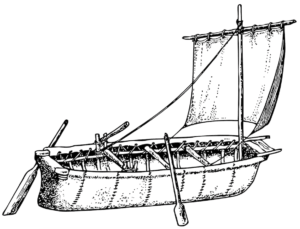A Brief History of Kayaking

Kayaking is one of the most popular water sports as of recent years. It improves your overall health and can take you to places you can’t reach on land. Plenty of locations are available worldwide to explore, including kayaking the Colorado River.
The first kayaks were rudimentary designs built approximately 5,000 years ago by the Inuit and Aleut people to travel swiftly across the water. Located in the Artic North America, these tribes would construct the kayaks out of whatever types of material they could find, including animal skins, bones and wood.
Main Types of Kayaks
There were typically two main types of kayaks. The first was made from driftwood, and the second was constructed from whalebones. Both types were covered in animal skins and coated in whale fat to make them waterproof. Seal bladders were often filled with air and attached to specific sections of the boat to make it more buoyant. While these kayaks were extremely lightweight and easy to carry, they were not very durable.
Comparing the Size
Much like the kayaks you are familiar with today, ancient designs were made in varying lengths. For example, large open skin boats, called umiaks, measured 60 feet or more. These long vessels could carry entire families along with their possessions. Hunters would use small kayaks for sneaking up on animals in the water. These boats were agile, lightweight and easy-to-control, much like the vessels today.
First Used for Sport
In the mid-1800s, kayaks were introduced in Europe as a soft-sided vessel for skimming across cold waters. The Germans and French were the first to use the boats for recreation, while tribes in the North and South Poles still used the boats for exploring.
Olympic Games
In 1936, kayak racing was added as an event to the Berlin Games. Over time, kayakers developed a much lighter and more resilient boat, and in the 50s, kayaks were made from fiberglass.
Kayaking Today
Today’s kayaks are made from heavy-duty polyethylene plastics that can last 10 to 15 years if properly cared for. They come in an array of colors, styles, and lengths. Tandem kayaks are ideal for sharing with a friend; they are also harder to flip and easier to manage.
Kayaking the Colorado River is a good place to test the waters. By booking a trip, you can experience the thrill of the sport in a safe environment and make some excellent memories.
